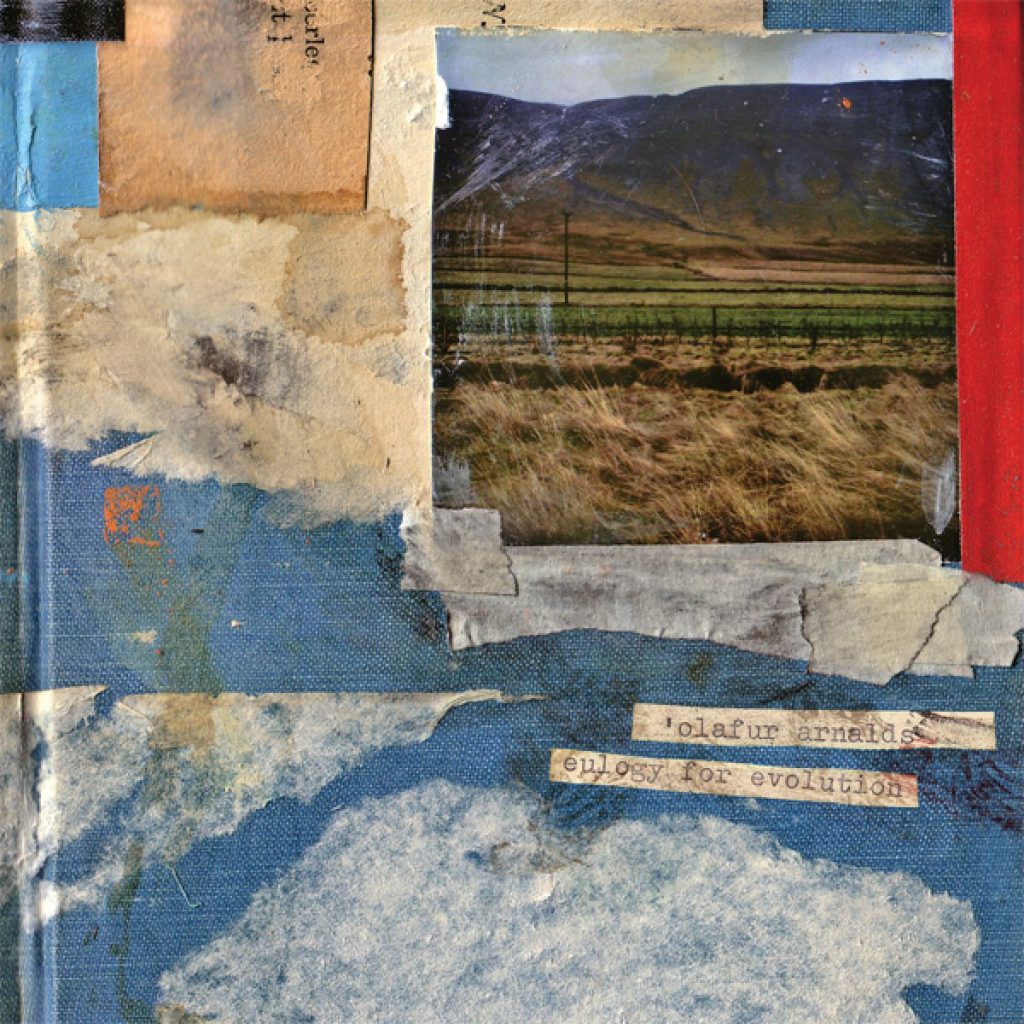Ólafur Arnalds – Eulogy for Evolution

If I have correctly identified Eulogy for Evolution as classical music, I am in trouble, because I am thoroughly out of my depth! To add to my woes, I’m trying to get my head around the Icelandic patronymic naming system to decide whether I should refer to Ólafur Arnalds as “Ólafur”, or “Arnalds”. Isn’t this meant to be chilled-out music? I’m becoming stressed!
I had to get to the end to decide that I was wrong anyway. I suppose this is classical, but it is also deceptively contemporary and it became an irresistible enigma that I found myself trying to unravel in delight.
I think no mistake should be made: Eulogy for Evolution is modern from the start. However, I was lured into thinking that it was a very straightforward, classically-inspired album with exaggerated expression and employing of modern recording techniques. This is where I might have made this review very boring. Thankfully I was entirely wrong.
The sounds Arnalds (yes, I’m ignorantly resorting to the English way of referring to somebody) chooses are increasingly harsh as the songs progress. The piano in the first track, 0040, hammers unrelentingly, despite the underlying calm of the piece, and the sounds continue to become clearer, and closer, and arguably less pleasant as the album goes on. The recordings are made with microphones placed much closer to the instruments than a traditional classical engineer would dare to place them.
I’m not yet particularly stimulated though. I note the end of 1440 which dwells on a beautifully-simplistic, repeated string passage for a good 90 seconds. Unusual… but it’s lovely touch and a moment that reeks of reminiscence and reflection.
So whilst the form of the pieces is more erratic than an authentically-styled classical homage might be, there’s still nothing to suggest that this is going to be anything other than a suite for piano & strings.
And so it continues right up until track 5 of 8. I’m writing things like “straightforward” and “inoffensive” and “modern without being needlessly jagged”. I’m positive, but a touch indifferent.
Then, just as I’m drawing conclusions, I pirouette and find myself recklessly, gleefully, highlighting & deleting entire paragraphs, when 3 minutes through track 6 – 3055 – Arnalds abruptly introduces electric bass and a drum kit to what has been a purely classical album for the past 25 minutes!
This is followed by penultimate track – 3326 – a sparse violin arrangement where the strings sound scratchier than any audio engineer could possibly want them to sound. It is extremely hard on the ears, but it’s not like it has this out-of-place DRUM KIT! Where did it come from, and where did it go?
This confusing departure jars me for a few moments, and whilst I’m contemplating it, the album rolls around to 3704/3837… and all of a sudden I understand.
I think it would be wrong of me to spoil the surprise, but I can tell you that in that moment it all makes sense. The modern recording techniques, the unsettling conformity, the vast expression, and the late introduction of the modern drum kit. It’s all about a journey. About evolution. About being young, and yearning for identity, and changing direction in order to try and find one.
Then as quickly as it turned, it’s all over; 30 seconds later.
Except that I don’t think it is. I think Eulogy for Evolution could be interpreted as autobiographical. Arnalds is young, and at a point in life where he has been influenced by a swathe of diverse music. The album feels completely unresolved; like there is much more to come.
The evolution in Eulogy for Evolution is exponential. Perhaps that was Arnald’s experience, or perhaps it’s just an expression of artistic freedom. It nevertheless serves to make a beautifully-crafted album deeply intriguing, and worthy of a lot more thought, and a lot less ‘chilling out’ than perhaps I had hoped for tonight!
I really enjoyed taking the time to try and make sense of this album. I do garner enjoyment out of listening to something this harmonically and dynamically expressive, but when considered as a whole – there is truly another dimension to this piece of work.
Arnalds doesn’t try to be controversial in my opinion. His choice of harmony is romantic and easy on the ear, where it would have been so easy to deliver the album with crass dissonance and atypical harmonic progressions.
Instead though, he progressively and tastefully presents us with reminders that we are listening to a contemporary classical album, then blows your perceptions out of the water. It’s elegant craftsmanship, and a little bit mad scientist, but it works, and I think it’s ingenious.
There’s part of me that’s saying that I shouldn’t portray myself as so surprised. Musicians are influenced by increasing portfolios of all kinds of music.
Squarepusher does a similar thing for example – heavily influenced by jazz drumming, he broaches pop, classical and jazz music to some degree.
But… but but but… there’s something about the completely unafraid way that Arnalds does “the Squarepusher thing” – the way he makes us wait so long for it – that beautifies this album for me.
Recommended by Rich